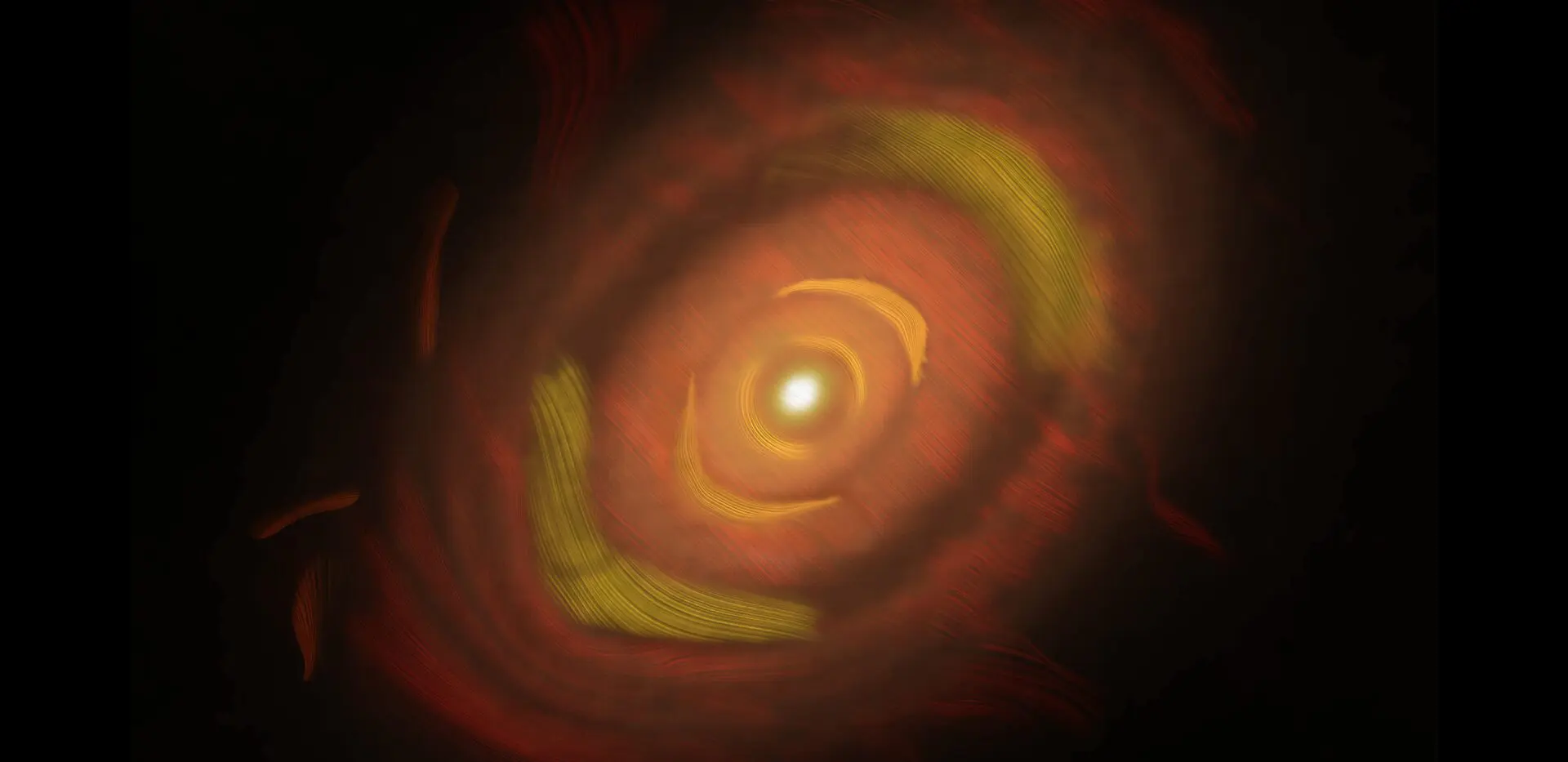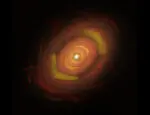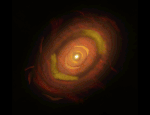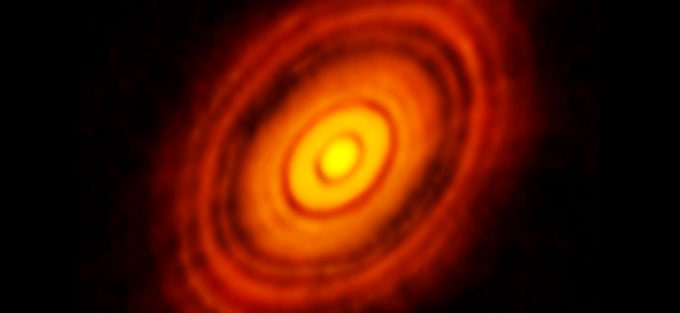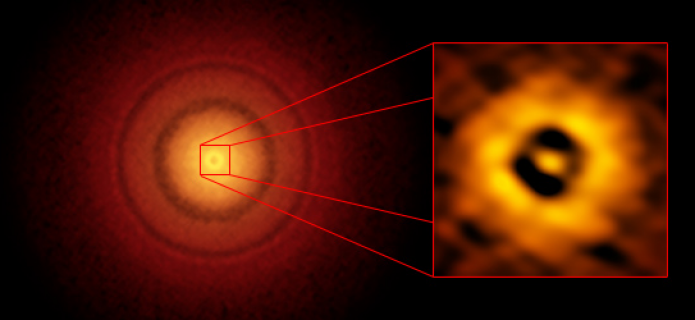ALMA Observation of Young Star Reveals Details of Dust Grains
Highest Resolution Dust Polarization Image Ever Taken Toward a Protoplanetary Disk
One of the primary goals of the Atacama Large Millimeter/submillimeter Array (ALMA) is to study the formation and evolution of planetary systems. Young stars are often surrounded by a disk of gas and dust, out of which planets can form. One of the first high resolution images that ALMA captured was of HL Tauri, a young star just 480 light-years away surrounded by a protoplanetary disk. The disk has visible gaps which could be where young protoplanets are forming. Planetary formation is a complex process that we still don’t fully understand. During this process, dust grains in the disk are growing in size as they collide and stick to each other, causing them to slowly grow to potentially become objects similar to those within our solar system.
One of the ways to study dust grains in these complex structures is to look at the orientation of the light waves they emit, which is known as polarization. Earlier studies of HL Tauri have mapped this polarization, but a new study from Stephens, et al. has captured a polarization image of HL Tauri in unprecedented detail. The resulting image is based on 10x more polarization measurements than of any other disk, and 100x more measurements than most disks. It is by far the deepest polarization image of any disk captured thus far, according to research published today in Nature.
The image was captured at a resolution of 5 AU, which is about the distance from the Sun to Jupiter. Previous polarization observations were at a much lower resolution and didn’t reveal the subtle patterns of polarization within the disk. For example, the team found the amount of polarized light to be greater on one side of the disk than the other, which is likely due to asymmetries in the distribution in the dust grains or their properties across the disk. Dust grains aren’t often spherical. They can be oblate like a thick pancake, or prolate like a grain of rice. When light is emitted by or scatters off these dust grains, it can become polarized, meaning that the waves of light are oriented in a particular direction rather than just randomly. These new results suggest that grains behave more like prolate grains, and they put strong constraints on the shape and size of dust grains within the disk.
A surprising result of the study is that there is more polarization within the gaps of the disk than the rings, even though there is more dust in the rings. The polarization within the gaps is more azimuthal, which suggests the polarization comes from aligned dust grains within the gaps. The polarization of the rings is more uniform, suggesting the polarization largely comes from scattering. In general, the polarization comes from a mix of scattering and dust alignment. Based on the data, it is unclear what is causing the dust grains to align, but they are likely not aligned along the magnetic field of the disk, which is the case for most dust outside of protoplanetary disks. Currently, it is thought that the grains are aligned mechanically, perhaps by their own aerodynamics, as they revolve around the central young star.
What will studies of HL Tau reveal next? This new publication clarifies that high resolution is needed for polarization observations to learn the details about the dust grains. As the world’s most powerful millimeter/ submillimeter telescope, ALMA will be a fundamental instrument for continuing this research.
Additional Information
The research paper "Aligned grains and scattered light found in gaps of planet-forming disk" by I. Stephens et al. appeared in Nature.
The National Radio Astronomy Observatory (NRAO), an ALMA partner on behalf of North America, published the original press release.
The Atacama Large Millimeter/submillimeter Array (ALMA), an international astronomy facility, is a partnership of the European Organisation for Astronomical Research in the Southern Hemisphere (ESO), the U.S. National Science Foundation (NSF) and the National Institutes of Natural Sciences (NINS) of Japan in cooperation with the Republic of Chile. ALMA is funded by ESO on behalf of its Member States, by NSF in cooperation with the National Research Council of Canada (NRC) and the National Science and Technology Council (NSTC) in Taiwan and by NINS in cooperation with the Academia Sinica (AS) in Taiwan and the Korea Astronomy and Space Science Institute (KASI).
ALMA construction and operations are led by ESO on behalf of its Member States; by the National Radio Astronomy Observatory (NRAO), managed by Associated Universities, Inc. (AUI), on behalf of North America; and by the National Astronomical Observatory of Japan (NAOJ) on behalf of East Asia. The Joint ALMA Observatory (JAO) provides the unified leadership and management of the construction, commissioning and operation of ALMA.
Images
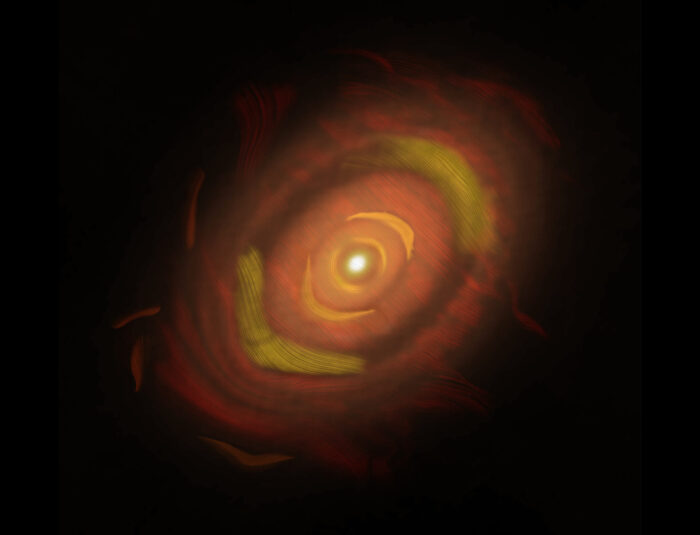
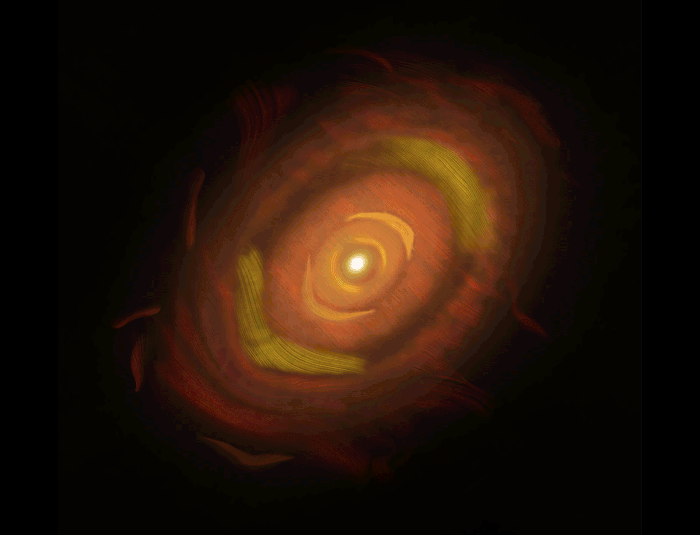
Contacts
-
Nicolás Lira
Education and Public Outreach OfficerJoint ALMA Observatory, Santiago - ChilePhone: +56 2 2467 6519Cel: +56 9 9445 7726Email: [email protected] -
Jill Malusky
Public Information Officer -
Naoko Inoue
EPO officer, ALMA ProjectNational Astronomical Observatory of Japan (NAOJ)Email: [email protected] -
Bárbara Ferreira
ESO Media Manager
